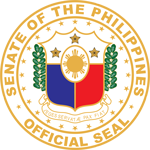The Philippines should learn from Vietnam when it comes to their best practices in education, including their efficient education spending, Senator Win Gatchalian said.

The lawmaker reiterated that while increasing resources can help improve education performance to a certain extent, it is equally important to ensure the optimal use of available resources. He pointed out that while there is not much difference between the two countries when it comes to funding their education, Vietnam’s learner performance is way higher than that of Filipinos.
The Philippines spends 3.8% of Gross Domestic Product (GDP) while Vietnam spends 4.06%. On average, the Philippines spends around P55,000 per learner every year from Kindergarten until the age of 15, while Vietnam spends on average around P69,000 per learner every year from Kindergarten until the age of 15.
Based on the results of the 2022 Programme for International Student Assessment (PISA), 72% or 7 out of 10 Vietnamese learners aged 15 have reached Level 2 or the minimum proficiency level in mathematics. In the Philippines, only 16% or less than 2 out of 10 learners have reached the minimum proficiency in mathematics.
At a minimum, learners who have reached Level 2 or the minimum proficiency level in mathematics, can interpret and recognize, without direct instructions, mathematical representations of simple situations such as comparing the total distance across two alternative routes or converting prices into a different currency.
“Bagama’t hindi nagkakalayo ang ginagastos ng Vietnam at Pilipinas para sa edukasyon, nakita naman natin sa datos na mas mataas ang marka ng mga mag-aaral mula Vietnam. Mahalagang matuto tayo sa halimbawa ng Vietnam dahil ipinakita nila ang kahalagahan ng mas mainam na paggamit ng mga resources at mas mabisang paggasta para sa edukasyon,” said Gatchalian, chairperson of the Senate Committee on Basic Education.
The Second Congressional Commission on Education (EDCOM II) is set to study Vietnam’s best practices in a visit scheduled later this month, according to Gatchalian, EDCOM II’s co-chairperson.
“This initiative reflects a proactive approach to enhancing our education system by drawing insights from the successes of Vietnam, with the aim of identifying strategies and methodologies that can be adapted to elevate educational standards in our country,” he added.
Analyzing the latest PISA results, Gatchalian said that Vietnam’s poorest learners, or those at the bottom 10% of the Economic, Social, and Cultural Status (ESCS), scored 91 points higher than the Philippines’ poorest learners. The average score of Vietnam’s poorest learners was 427, while the Philippines’ average score was 336.


